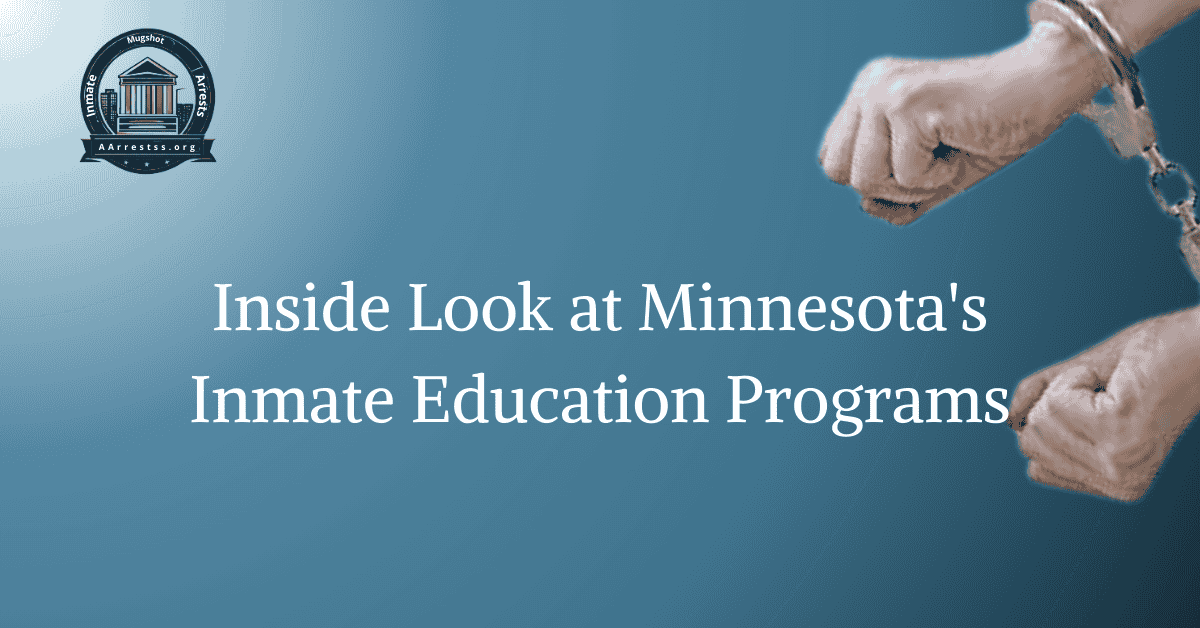Inside Look at Minnesota’s Inmate Education Programs
Minnesota’s inmate education programs offer a unique opportunity for incarcerated individuals to transform their lives through education. With a focus on providing a holistic approach to rehabilitation, these programs aim to equip inmates with the necessary skills and knowledge to reintegrate into society successfully. Through a combination of academic classes, vocational training, and life skills development, inmates are given the tools they need to break the cycle of crime and create a brighter future for themselves and their communities.
The inmate education programs in Minnesota are designed to address the specific needs and challenges faced by individuals within the correctional system. By offering a wide range of educational opportunities, including high school equivalency classes, college courses, and vocational training in fields such as culinary arts and construction, inmates are given the chance to develop marketable skills that can lead to gainful employment upon release. Additionally, these programs focus on personal development, providing inmates with resources and support to address underlying issues such as addiction and mental health.
Overview of Inmate Education Programs
Inmate education programs in Minnesota offer incarcerated individuals a unique opportunity to transform their lives through education. These programs aim to provide a holistic approach to rehabilitation, equipping inmates with the necessary skills and knowledge to successfully reintegrate into society. By offering a combination of academic classes, vocational training, and life skills development, inmates are given the tools they need to break the cycle of crime and create a brighter future for themselves and their communities.
Addressing Specific Needs and Challenges
The inmate education programs in Minnesota are designed to address the specific needs and challenges faced by individuals within the correctional system. These programs recognize that inmates often face barriers to education such as limited access to resources and lack of support. By offering a wide range of educational opportunities, including high school equivalency classes, college courses, and vocational training in fields such as culinary arts and construction, inmates are given the chance to develop marketable skills that can lead to gainful employment upon release.
Focusing on Personal Development
In addition to academic and vocational training, inmate education programs in Minnesota also prioritize personal development. These programs understand that underlying issues such as addiction and mental health can contribute to criminal behavior. Therefore, they provide inmates with resources and support to address these issues. Through counseling services, therapy sessions, and access to support groups, inmates are given the opportunity to work on themselves and address the root causes of their actions.
Creating Opportunities for Successful Reintegration
The ultimate goal of inmate education programs in Minnesota is to help individuals successfully reintegrate into society. By providing inmates with the necessary skills and knowledge, these programs increase the chances of finding gainful employment upon release. In turn, this reduces the likelihood of re-offending and helps create safer communities. Inmate education programs give individuals a second chance at life and the opportunity to contribute positively to their communities.
Collaboration and Partnerships
The success of inmate education programs in Minnesota is also attributed to collaboration and partnerships with various organizations. These programs work closely with educational institutions, vocational training centers, and community organizations to provide a comprehensive range of resources and opportunities for inmates. By bringing together expertise and resources from different sectors, inmate education programs can offer a well-rounded and impactful educational experience.
Measuring Success and Impact
The effectiveness of inmate education programs is measured through various indicators. These programs track the rate of recidivism among program participants, employment rates upon release, and overall educational attainment. By monitoring these metrics, the programs can continuously assess their impact and make necessary adjustments to ensure the best possible outcomes for inmates.
FAQs
What are the inmate education programs in Minnesota?
Minnesota offers a range of inmate education programs aimed at providing inmates with educational opportunities while incarcerated. These programs include GED classes, vocational training, college courses, and life skills workshops.
Why are inmate education programs important?
Inmate education programs are important because they help to reduce recidivism rates. By providing inmates with education and skills training, they are more likely to find stable employment and reintegrate into society successfully after their release.
How do inmate education programs benefit the community?
Inmate education programs benefit the community in several ways. By helping inmates develop skills and knowledge, they are less likely to engage in criminal behavior upon release, making communities safer. Additionally, educated and skilled individuals are more likely to contribute positively to society.
Are these programs available to all inmates?
Yes, these programs are available to all eligible inmates in Minnesota. However, participation may be subject to certain criteria, such as good behavior and meeting program requirements.
How are these programs funded?
Inmate education programs in Minnesota are typically funded through a combination of state and federal funds, as well as partnerships with educational institutions and nonprofits.
What outcomes have been seen from these programs?
Studies have shown that inmate education programs have positive outcomes, including reduced recidivism rates, increased employment opportunities for inmates upon release, and improved overall well-being and quality of life.








